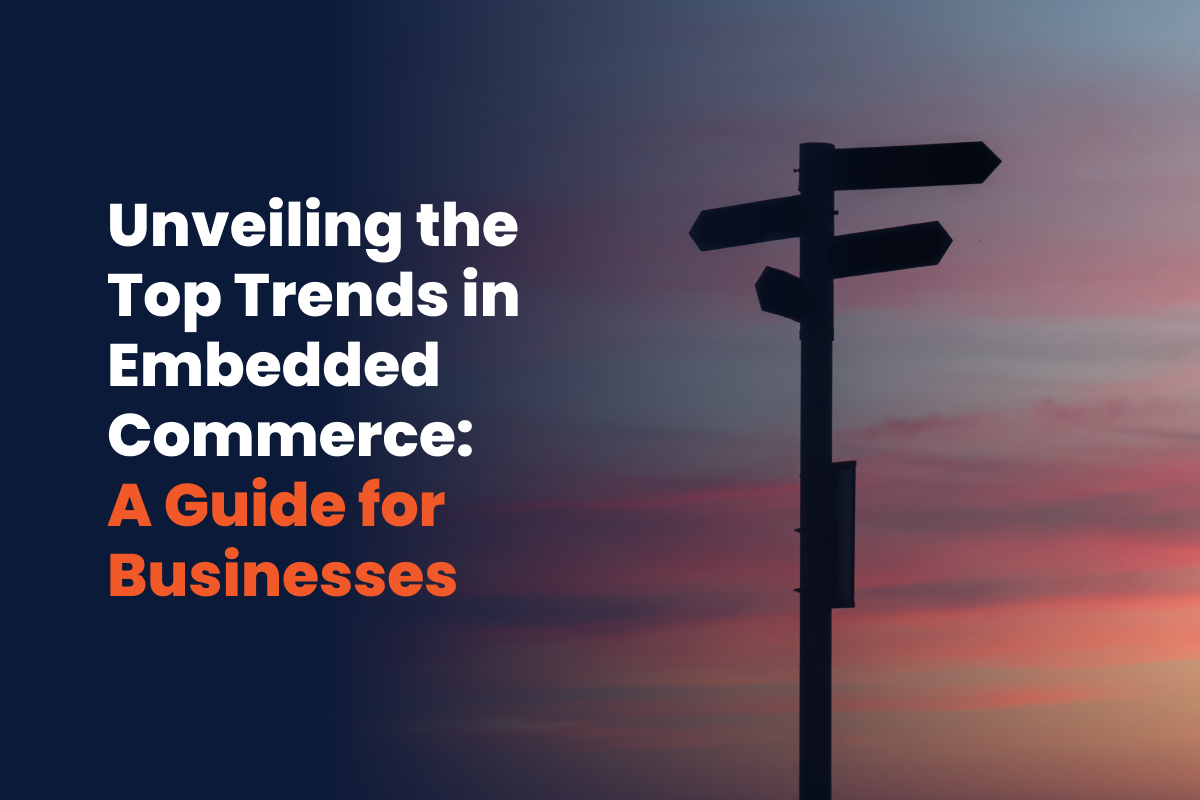Top Trends in Embedded Commerce: A Guide for Businesses
In today’s fast-paced digital landscape, staying ahead of the curve is crucial for businesses looking to thrive. One area that’s been gaining significant traction is embedded commerce – the seamless integration of buying opportunities into non-retail environments. From social media platforms to connected devices, embedded commerce is reshaping the way consumers interact with brands and make purchases. In this blog post, we’ll delve into the top trends in embedded commerce that businesses should keep a close eye on.
1. Social Commerce Evolution: Social media platforms have evolved beyond mere networking hubs into powerful marketplaces. The integration of shopping features directly into social media feeds has transformed the way consumers discover and purchase products. From Instagram’s shoppable posts to Facebook Marketplace, businesses are leveraging social commerce to reach customers where they already spend a significant amount of time.
2. Voice Commerce: With the proliferation of virtual assistants like Amazon’s Alexa, Google Assistant, and Apple’s Siri, voice commerce is becoming increasingly mainstream. Consumers can now make purchases using voice commands, streamlining the buying process and creating new opportunities for businesses to engage with their audience. Integrating voice commerce capabilities into smart speakers, cars, and other connected devices presents a promising frontier for embedded commerce.
3. IoT-driven Purchases: The Internet of Things (IoT) has opened up a world of possibilities for embedded commerce. Smart devices, ranging from refrigerators to wearables, can now facilitate automatic reordering of products, personalized recommendations, and even predictive maintenance. By harnessing IoT technology, businesses can create seamless, frictionless shopping experiences that anticipate and fulfill consumers’ needs in real-time.
4. AR and VR Shopping Experiences: Augmented Reality (AR) and Virtual Reality (VR) technologies are revolutionizing the way consumers interact with products online. By enabling immersive shopping experiences, businesses can bridge the gap between the physical and digital worlds, allowing customers to visualize products in their own environments before making a purchase. From virtual try-on experiences in the fashion industry to AR-powered home decor visualization tools, AR and VR hold immense potential for embedded commerce.
5. Personalization and AI-driven Recommendations: Personalization has become a cornerstone of modern commerce, and embedded commerce is no exception. By leveraging artificial intelligence and machine learning algorithms, businesses can analyze vast amounts of data to deliver hyper-targeted recommendations and personalized shopping experiences. Whether through product recommendations based on past purchases or tailored promotions delivered via chatbots, AI-driven personalization is reshaping the way consumers engage with brands.
6. Subscription Economy Integration: The subscription-based business model continues to gain momentum across various industries, offering consumers convenience and businesses recurring revenue streams. Embedded commerce plays a vital role in facilitating subscription-based purchases seamlessly within existing digital ecosystems. Whether it’s subscription boxes integrated into social media platforms or smart devices offering subscription services, businesses are tapping into the subscription economy to drive customer loyalty and long-term value.
In conclusion, embedded commerce is not just a trend but a transformative force reshaping the future of retail. By embracing these top trends – from social commerce and voice-enabled shopping to IoT-driven experiences and AI-powered personalization – businesses can unlock new opportunities to engage with consumers and drive growth in the digital age. As technology continues to evolve, staying agile and innovative will be key for businesses looking to thrive in the dynamic world of embedded commerce.




Leave a Reply
Want to join the discussion?Feel free to contribute!